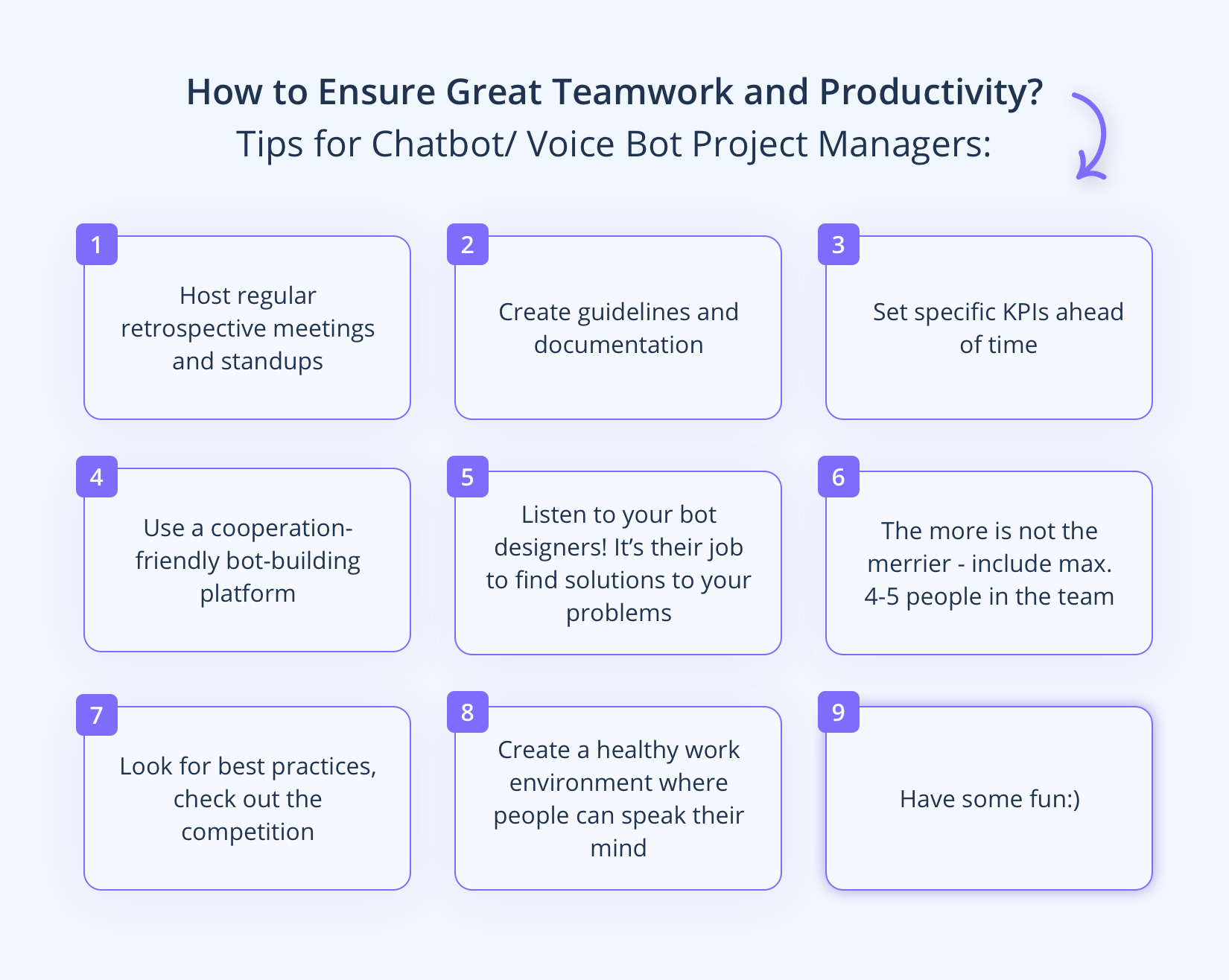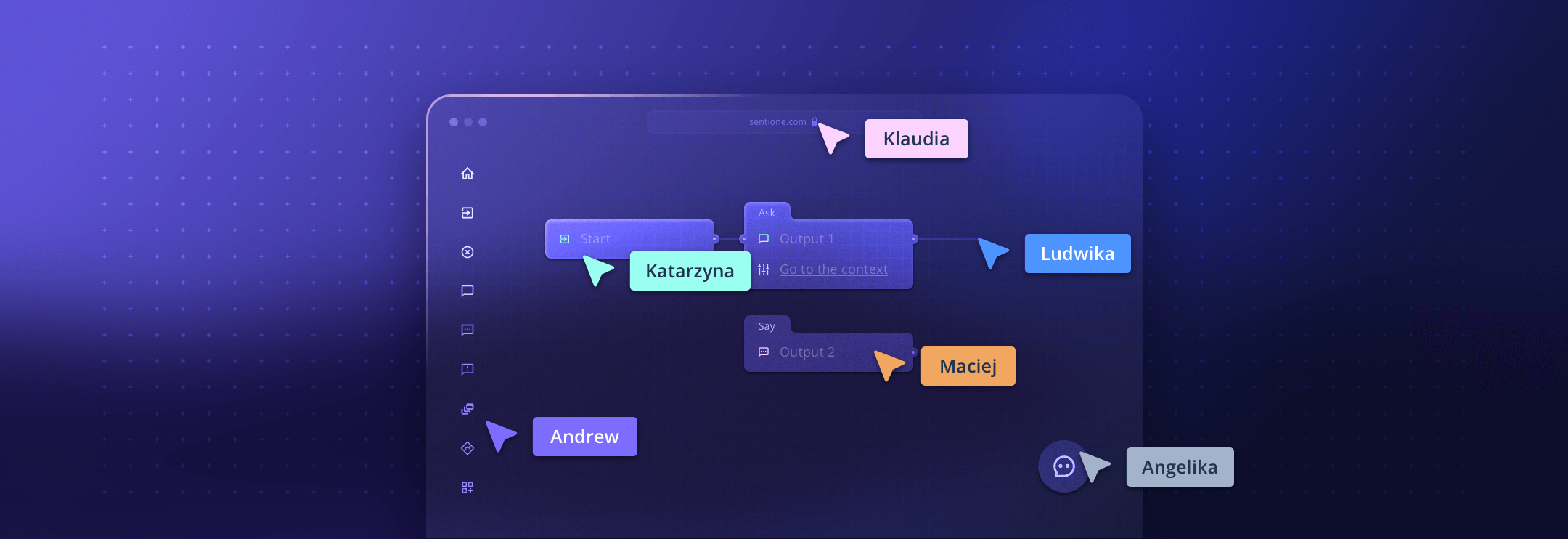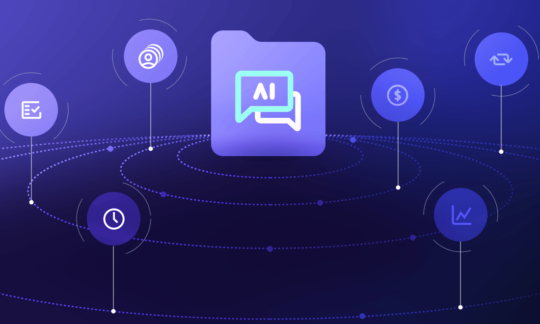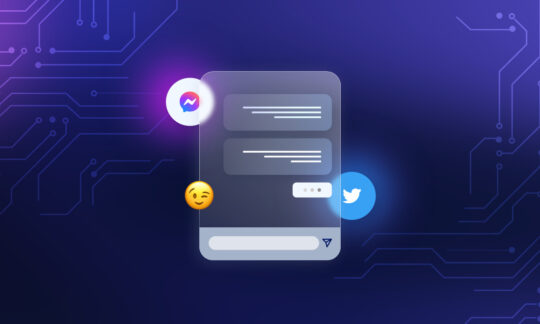How to Improve Cooperation & Boost Performance in a Conversational AI Project? Practical Tips from our Bot Design Team
Table of contents
- What was the biggest challenge you’ve had to face when working on a chatbot/voice bot project and cooperating with other bot designers?
- How did you tackle this challenge?
- What advice do you have for managers who run chatbot/voice bot projects in their organisations?
- What’s your advice to bot designers on ensuring smooth cooperation and delivery of an effective chatbot/ voice bot?
- How many bot designers should work on one bot? Is it always the more the better?
- How does the SentiOne Automate platform support teamwork?
- Partner Up with SentiOne Automate to Deliver Bots People Want to Talk to
As a manager responsible for delivering a conversational AI solution for your organisation, you’re most likely going to face some challenges – especially when the project involves managing and collaborating with multiple bot designers. Achieving effective teamwork and seamless communication can significantly influence your project’s success. But how to do it? We thought it’s best to hear straight from the horse’s mouth. That’s why we asked the SentiOne Automate team of expert bot designers and a project manager to share their experience and insights on how you can improve cooperation, team’s performance, streamline your project, and ultimately deliver a highly effective AI chatbot or voice bot.
What was the biggest challenge you’ve had to face when working on a chatbot/voice bot project and cooperating with other bot designers?
Andrew Fryckowski, Head of Bot Design: Communication. It’s important that everyone knows the objectives of the project, how everyone’s tasks relate to each other and the bigger picture. Alignment and communication around the work and tasks is crucial, otherwise team members get confused about the pending tasks which then negatively influences the bot quality.
Katarzyna Fliszkiewicz, Head of Bot Implementation: The hardest thing for me was to establish common standards for everyone involved and maintain the same level of engagement and understanding.
Maciej Szulim, Bot Designer: Coordinating team efforts toward implementing a coherent and scalable conversation logic and an NLU model.
Klaudia Suchecka, Bot Designer: I remember a project in which all bot designers in the team had different ways of building the bot. Moreover, we had a different understanding of business cases and diagrams. On top of that, there were problems with the consistency of NLU, which was modified by too many people without proper understanding of the technology.
Ludwika Kosmaczewska, Bot Designer: There are always challenges when working on a bot project, but I think the biggest one involved coordinating all the changes inside internal processes like router, beginning, settings etc. It is tricky to keep these processes consistent, especially when many people need to be involved and work at the same time.
Angelika Łucka, Head of Project Management: The biggest challenge for me during bot development has always been making our clients aware that a user’s conversation with a bot shouldn’t mirror a one-on-one conversation with a human agent. Our experience shows that the bot’s communication style should be simplified, with shorter, clearer, and less complex messages. We live in very dynamic times, have limited time, and want to solve our problems quickly – our solutions should support that.
How did you tackle this challenge?
Andrew, Head of Bot Design: I set up an open culture of communication and had regular check in meetings with the team to align on goals and tasks. I also promoted learning and support from all team members.
Katarzyna, Head of Bot Implementation: We organised retrospective meetings to discuss the challenges – it helped but didn’t fix all of our problems.
Maciej, Bot Designer: Working on a big and production-ready NLU model requires skills and time. We spend lots of time on perfecting communication. We also use external tools that help us prepare and test NLU training corpus. When it comes to the creation of conversation logic (or ‘flows), programming skills and knowledge of design patterns come in handy.
Klaudia, Bot Designer: We found one of the SentiOne Automate features to be very helpful. It shows you what process is being edited and by whom. The bot-building platform also gives you a notification each time your changes are about to overwrite the previous changes made by someone else.
Ludwika, Bot Designer: We had to rebuild some processes, organise knowledge-sharing sessions, and create documentation (as a single point of truth) to make the bot more consistent and easier to scale and develop. This helped a lot.
Angelika, Head of Project Management: The best solution in such situations is to verify similar virtual assistants with a high NPS score, transfer knowledge from experienced bot designers to the less experienced ones, and – very important – test the solution on a smaller group of users.

9 tips for project managers on how to improve cooperation in the bot design teams.
What advice do you have for managers who run chatbot/voice bot projects in their organisations?
Angelika, Head of Project Management: If you want a high-quality product, define specific KPIs ahead of time, such as the number of interactions it should handle, intent accuracy, customer satisfaction, or automation level. During the chatbot/voice bot development, emphasise why these metrics are crucial, verify them as you go, and ensure they are always at the highest possible level. It’s important for the team to know how to build bots from a UX perspective, how to verify if they are written well.
Andrew, Head of Bot Design: Try to empathise and understand the work of your team – how they design bots and use the platform. Also, have fun when you can – you don’t always need to focus on work tasks (especially in a remote work setting) ;).
Maciej, Bot Designer: Listen to your bot designers. Communicate problems, not solutions. It’s the bot designers’ job to come up with solutions to your problems. Ensure that the whole team has required skills. Try to avoid strict deadlines and rigid estimations when possible – they kill creativity and a problem-solving attitude in the team. Also, be aware that a simple bug can cause them to lose a couple of hours.
Ludwika, Bot Designer: Create a healthy work environment where people can speak their mind, ask questions, be honest, and trust each other. Look for solutions together, don’t force the bot designers to implement your idea as the only way of solving the problem. Communicate clear goals and deadlines, save some space for creativity, avoid micromanagement, and organise retrospective meetings regularly to identify problems early on.
What’s your advice to bot designers on ensuring smooth cooperation and delivery of an effective chatbot/ voice bot?
Andrew, Head of Bot Design: Always bring up any problems, issues that you are facing. Better to discuss any blockers early on than trying to figure it all out alone.
Maciej, Bot Designer: Plan ahead, introduce best practices, have a very good understanding of all of the features of the bot-building platform you’re using.
Ludwika, Bot Designer: At the beginning of the cooperation, it’s good to create guidelines and documentation to be on the same page, use the same methods like naming etc. It’s also helpful to focus on creating proper executive diagrams (created based on business diagrams) and confirm all the conversation paths with the stakeholders. This allows for a more efficient flow building later on. Don’t forget about NLU – a good NLU model is essential for the bot’s performance so you need to create guidelines and clearly communicate all the changes within the team.
Angelika, Head of Project Management: Whenever starting a bot project, I advise the teams responsible for bot building that quality matters and that quality is built through measuring customer satisfaction, optimisation, and continuous monitoring of the solution. I recommend being open to users’ feedback, which can be easily collected using our SentiOne Automate analytical tool.
How many bot designers should work on one bot? Is it always the more the better?
Katarzyna, Head of Bot Implementation: The team shouldn’t be too big – five people maximum, on the same level of proficiency, skillset, attitude and business understanding. In my experience, the cooperation suffers in bigger teams, especially if the level of knowledge and experience is too diverse.
Angelika, Head of Project Management: Our Automate platform allows for the cooperation between many bot designers, but from my experience the best solutions are created within smaller, cohesive teams.
How does the SentiOne Automate platform support teamwork?
Andrew, Head of Bot Design: Our bot-building platform is designed to be collaborative – allowing multiple users to work on a project simultaneously. This allows us and our clients’ teams to avoid conflicts in the bot design work. Automate has great features such as version backups, as well as notes that communicate what each bot designer is working on in the dialog building canvas.
Ludwika, Bot Designer: Apart from that, you can also: save a new version of the flow or go back to the previous one, create reusable contexts and use them in different processes, or leave notes in the flow for other designers.
Partner Up with SentiOne Automate to Deliver Bots People Want to Talk to
Ready to start an AI chatbot or voice bot project in your organisation? Partner up with the industry experts at SentiOne Automate! Schedule a demo with our team today to learn more about our bot-building platform.
Article Summary
In this article, the SentiOne Automate team shares practical tips for improving cooperation and performance in conversational AI projects, particularly when working with multiple bot designers. They discuss challenges faced in bot projects, provide advice for project managers, offer tips for bot designers, and emphasize the importance of quality and teamwork. The article highlights the benefits of the SentiOne Automate platform for collaborative bot design.



